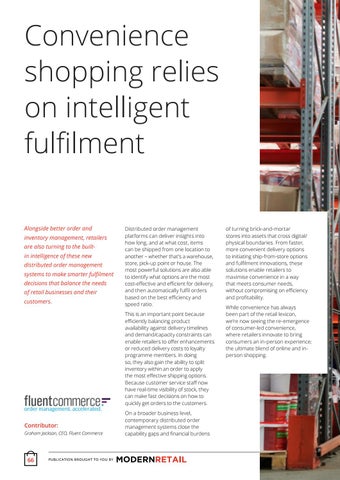Convenience shopping relies on intelligent fulfilment Alongside better order and inventory management, retailers are also turning to the builtin intelligence of these new distributed order management systems to make smarter fulfilment decisions that balance the needs of retail businesses and their customers.
Distributed order management platforms can deliver insights into how long, and at what cost, items can be shipped from one location to another – whether that’s a warehouse, store, pick-up point or house. The most powerful solutions are also able to identify what options are the most cost-effective and efficient for delivery, and then automatically fulfil orders based on the best efficiency and speed ratio. This is an important point because efficiently balancing product availability against delivery timelines and demand/capacity constraints can enable retailers to offer enhancements or reduced delivery costs to loyalty programme members. In doing so, they also gain the ability to split inventory within an order to apply the most effective shipping options. Because customer service staff now have real-time visibility of stock, they can make fast decisions on how to quickly get orders to the customers.
Contributor: Graham Jackson, CEO, Fluent Commerce
66
PUBLICATION BROUGHT TO YOU BY
On a broader business level, contemporary distributed order management systems close the capability gaps and financial burdens
of turning brick-and-mortar stores into assets that cross digital/ physical boundaries. From faster, more convenient delivery options to initiating ship-from-store options and fulfilment innovations, these solutions enable retailers to maximise convenience in a way that meets consumer needs, without compromising on efficiency and profitability. While convenience has always been part of the retail lexicon, we’re now seeing the re-emergence of consumer-led convenience, where retailers innovate to bring consumers an in-person experience; the ultimate blend of online and inperson shopping.













